“Half a league from this city is a temple. It is of such extraordinary construction, that it is impossible to describe it. It is like no other building in the world. It has towers and decoration and all the refinements that human genius can conceive of”
—First Portuguese explorers in Angkor
CAMBODIA
SMOOTH TRANSITION
The transition between Thailand of Cambodia instantly settled the decor. The moment I sat foot on the border between the two countries, the rain started pooring like hell. It was a literal deluge. End of September is right in the middle of the monsoon, the whole country is under water. It is so impressive to see the rice fields flooded, that at first, I was wondering if it was exceptional or not. Not only the fields are overflowed with water, but also many houses and shops on low grounds. Making people work with their feet in the water.
For this new adventure, I was joined by Pierre, a long time friend which whom I already shared uncountable astounding adventures. Although arriving in Cambodia in the middle of the rain season, we managed to dodge every drops, as if protected by a good omen. Our very first day visit at Angkor wat, ended with a shower. Literally the moment we sat foot back in our tuktuk it started to rain cats and dogs. It went on like this for all our stay, every time it was raining, we weren’t outside.
Some might say it’s a bad idea to get there during the monsoon period, but here are three reasons stating otherwise :
- There are WAY less tourists. So the prices are lower than usual and temples are almost empty : In Angkor, the one day ticket was transformed into a two day ticket for the same price. (30$)
- The weather is actually more bearable than in high season. You’ll have clouds and some rain to freshen you up. (It can go up to 38°C in high season.)
- The rain is far from pouring all the time, usually it is 20-30 minutes shower, and then it stops
THE LOST CITY OF ANGKOR
EXPLORE LIKE INDI
Going through Angkor ruins feels a bit like being Indiana Jones, except you’ll need a tuktuk instead of a machete to go through the jungle. It is so big, that it is impossible to grasp even the slightest idea of the overall scale. The only way to really understand it, is living the experience. But oh my, what an Experience !
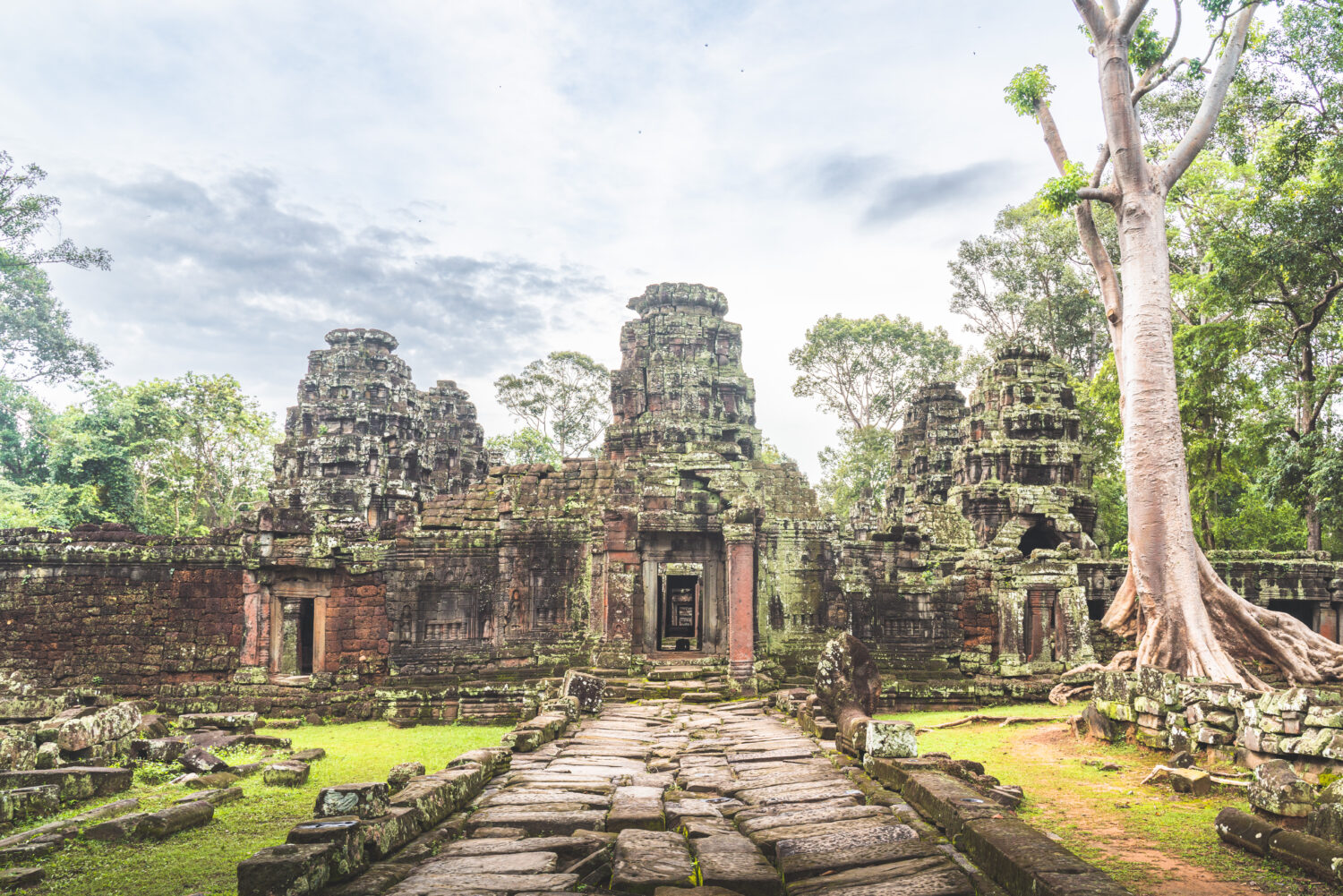
FIRST DAY :
To kick things off, we hired a tuktuk driver named Tsuna. Always in a good mood and very funny, he led us to the main temples. We started our exploration a Sunday around 12h00, with a very unfortunate timing, as the temples were crowded with Cambodians families taking photos in traditional clothes. For them, it was Independence Day. However, past the main temples of Angkor Wat and Bayon temple, the jungle was pretty quiet. Smaller temples scattered here and there, were waiting for explorers to undertake their adventures, beneath the dense canopy foliage.
There really is magic in those centuries old stones constructions filled with detailed bas reliefs and heroic scenes from the ancient world. Some kind of ungraspable feeling of nostalgia arises. As if those stories carved in sandstone were a tale depicting our own history. As if the Khmer lively capital was within our reach, even though abandoned 600 years ago.
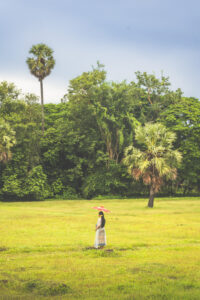
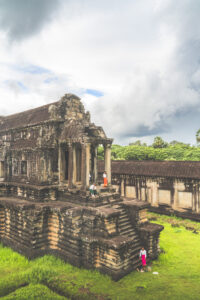
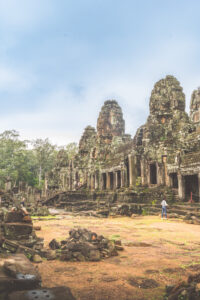
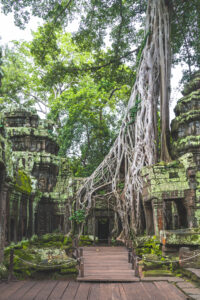
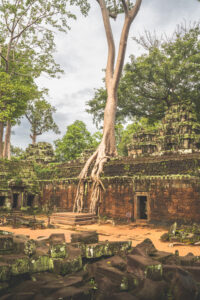
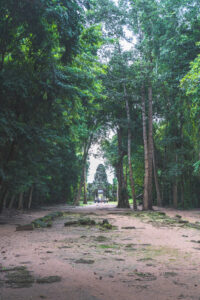
SECOND DAY :
The next day we wanted to see the sun rise on Angkor, so we woke up at 4:00 in the morning, took a tuktuk (With Ny, our second driver) and headed for the great temple of Angkor Wat in Pitch darkness. In the Main Street leading to the temple, there was no lights to guide us. We just walked slowly to reach the first checkpoint entrance. It takes more or less 20 minutes, to go from the tuktuk drop off point, to the entrance of Angkor Wat.
Then the fun began. We were about a 100 to see the sunrise, and then everyone split up. The rest of the morning was a quiet walk into smaller temples and well arranged jungle paths. It was empty, calm, relaxing, extremely enjoyable. Just for a morning, Angkor became untouched land again.
Tips before visiting Angkor :
- You can take three tickets : 1 day, 3 days and 7 days. Our initial choice was three days, but like I said, the 1 day ticket was working 2 days. It usually works in low season.
- First you’ll need to go and buy the tickets at the ticket office. But you don’t need to go by yourself, your driver will lead you there. Just know that it takes a little bit of time.
- Try to find a good tuktuk driver. Here is the contact of ours: Ny, a young and really friendly Cambodian who speaks English an also French (his French is already really good, and he’d like to become tour guide, so help him out!)
- No matter the length you decide to stay, the sunrise is unmissable. The sole experience of walking in Angkor by night is worth it. Especially with way less tourists surrounding you.
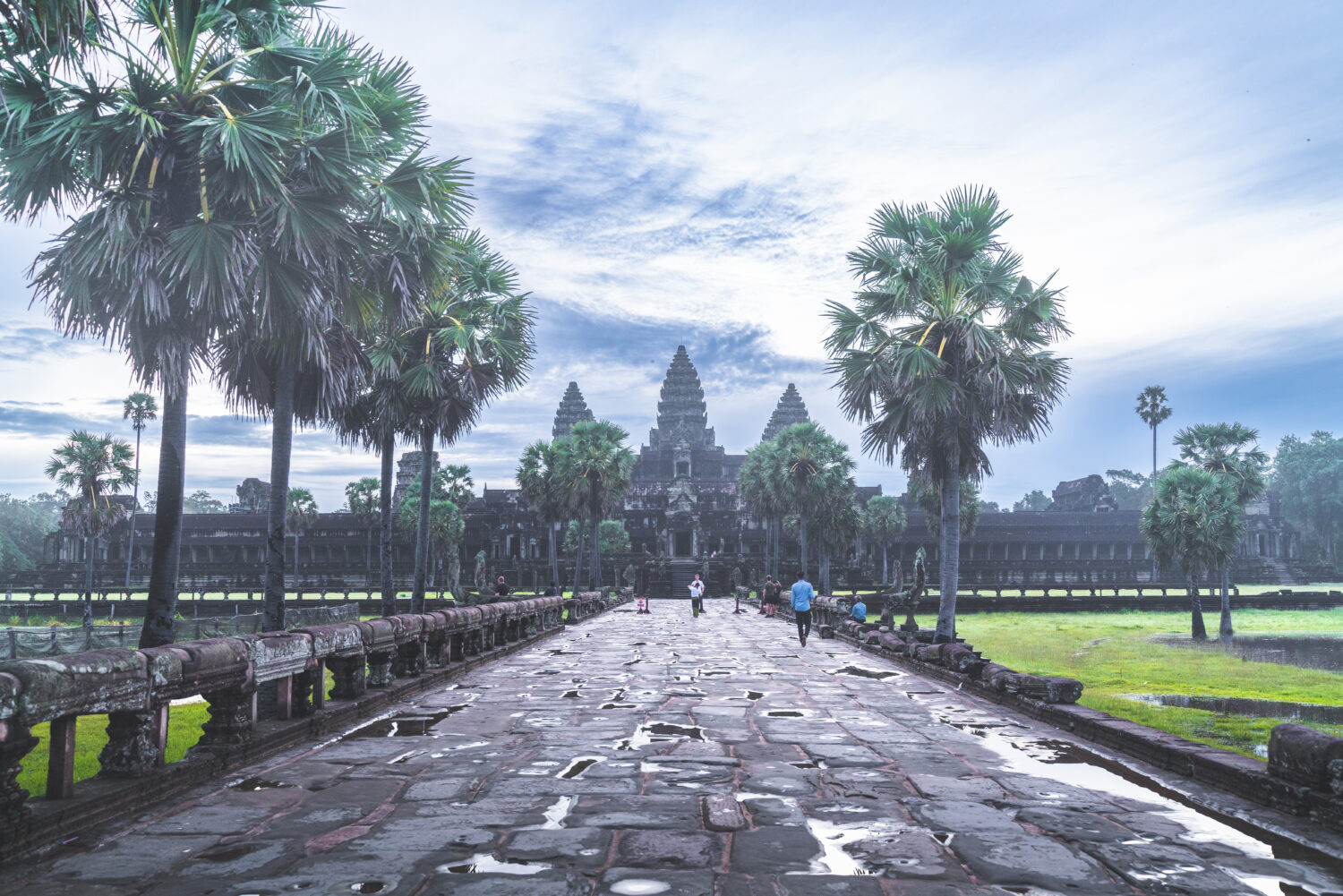
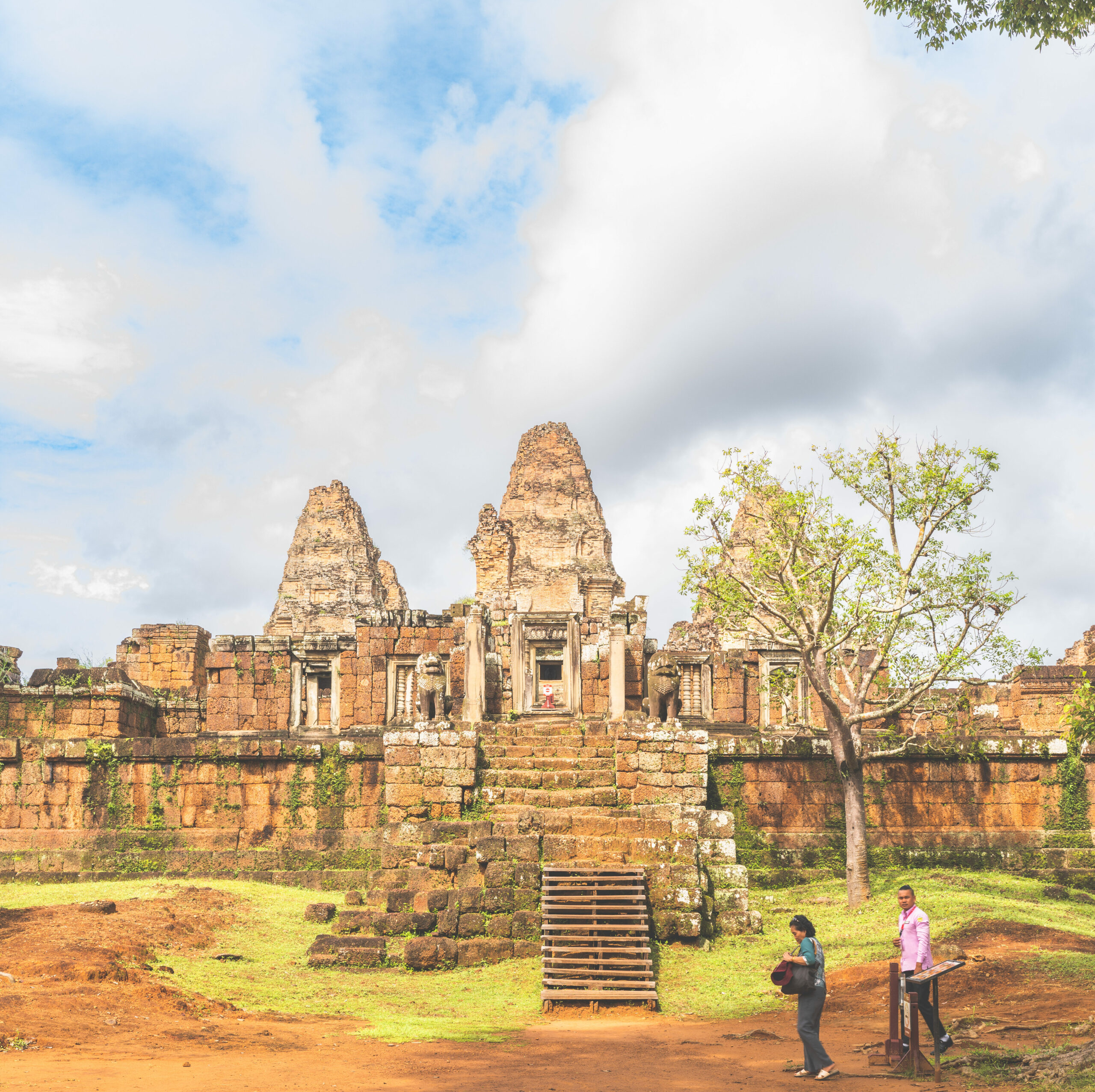
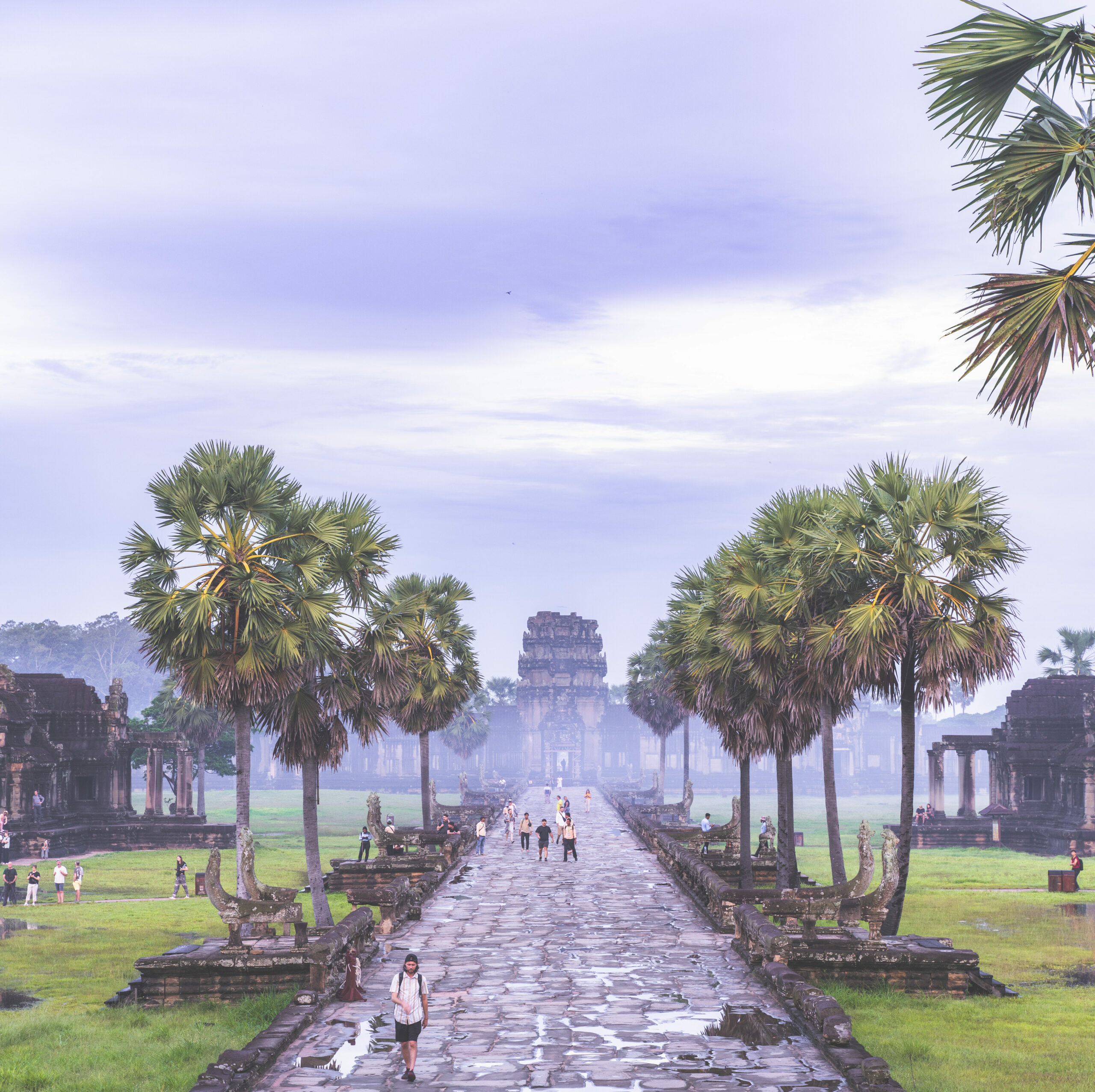
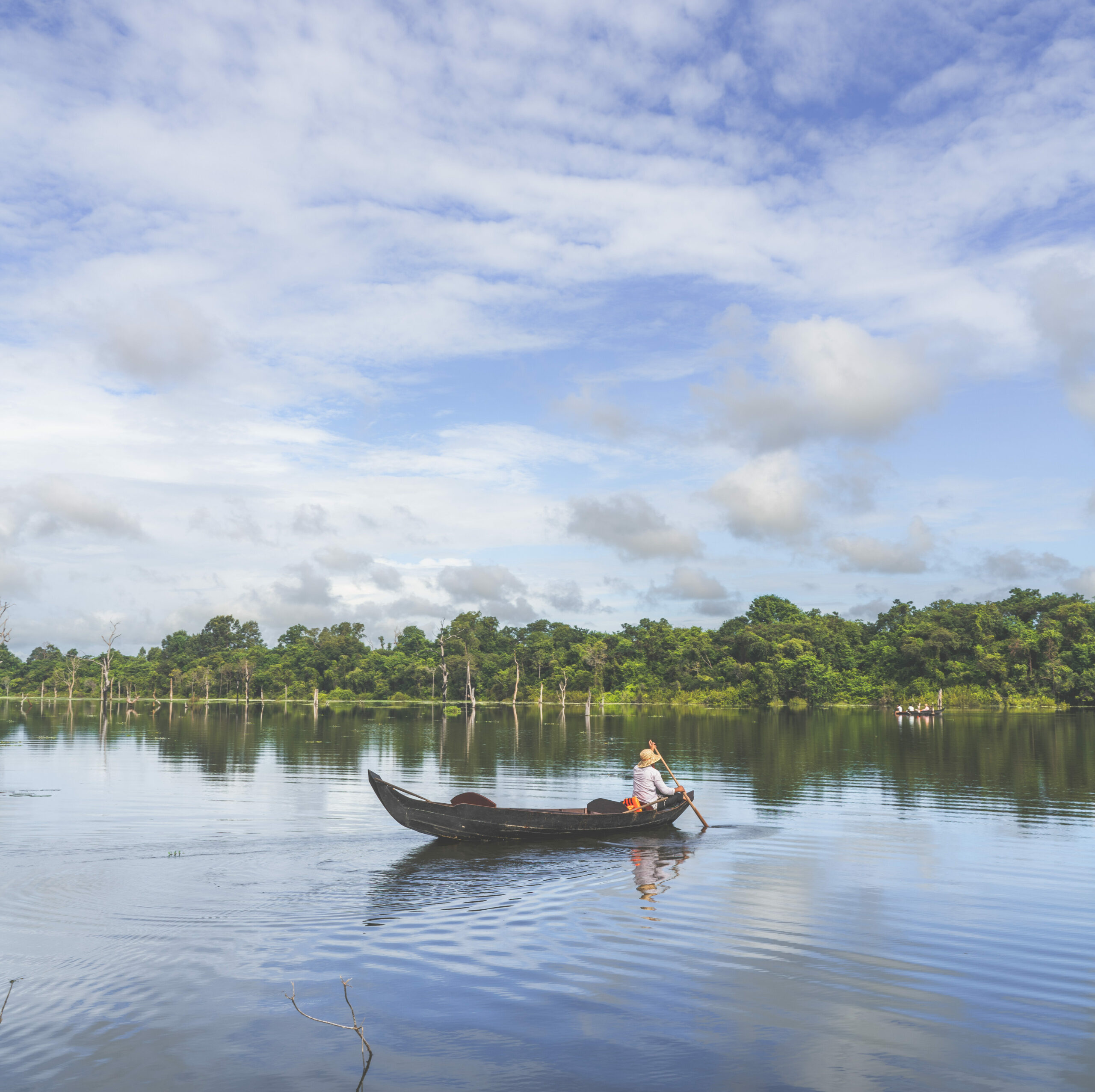
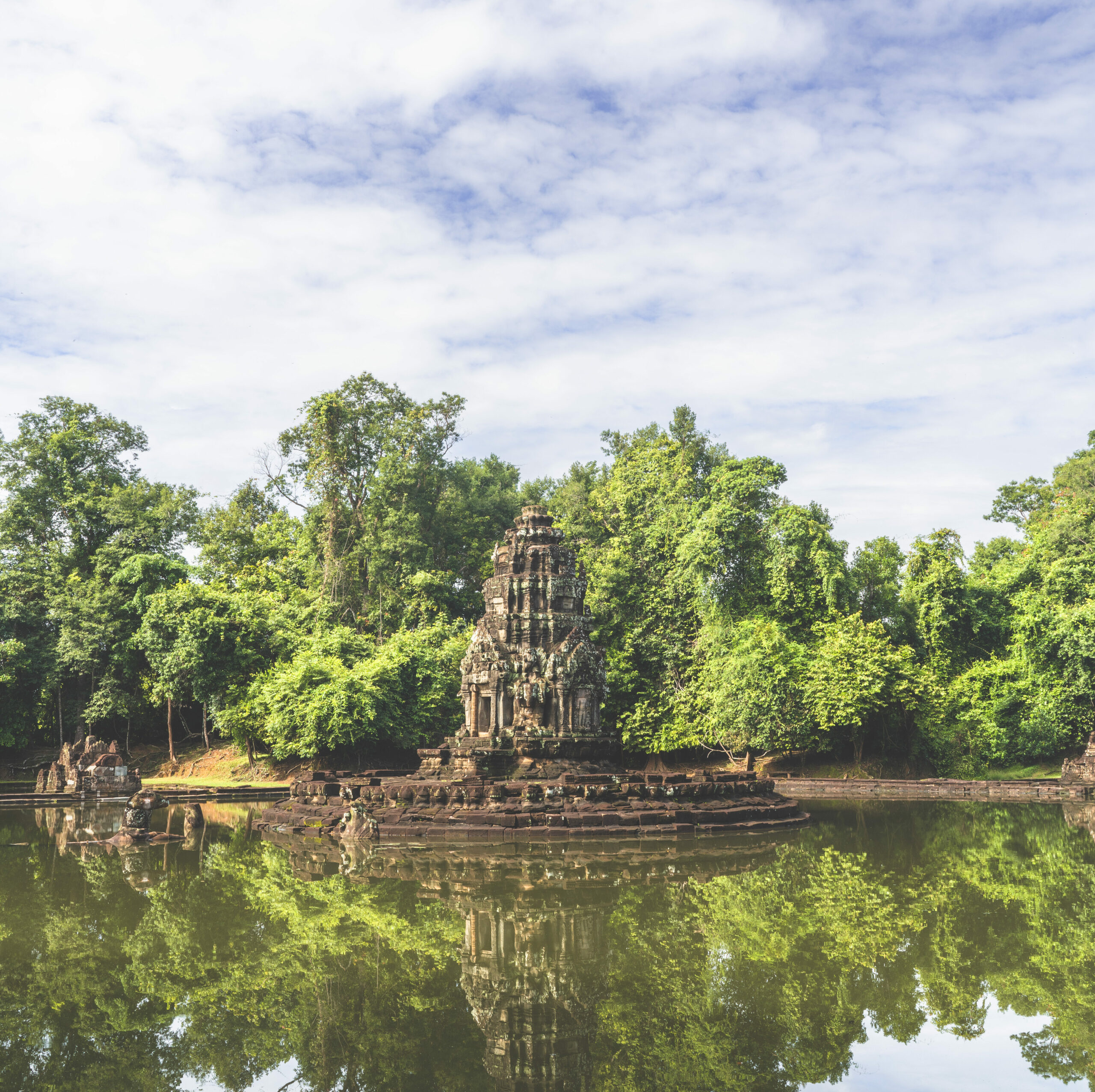
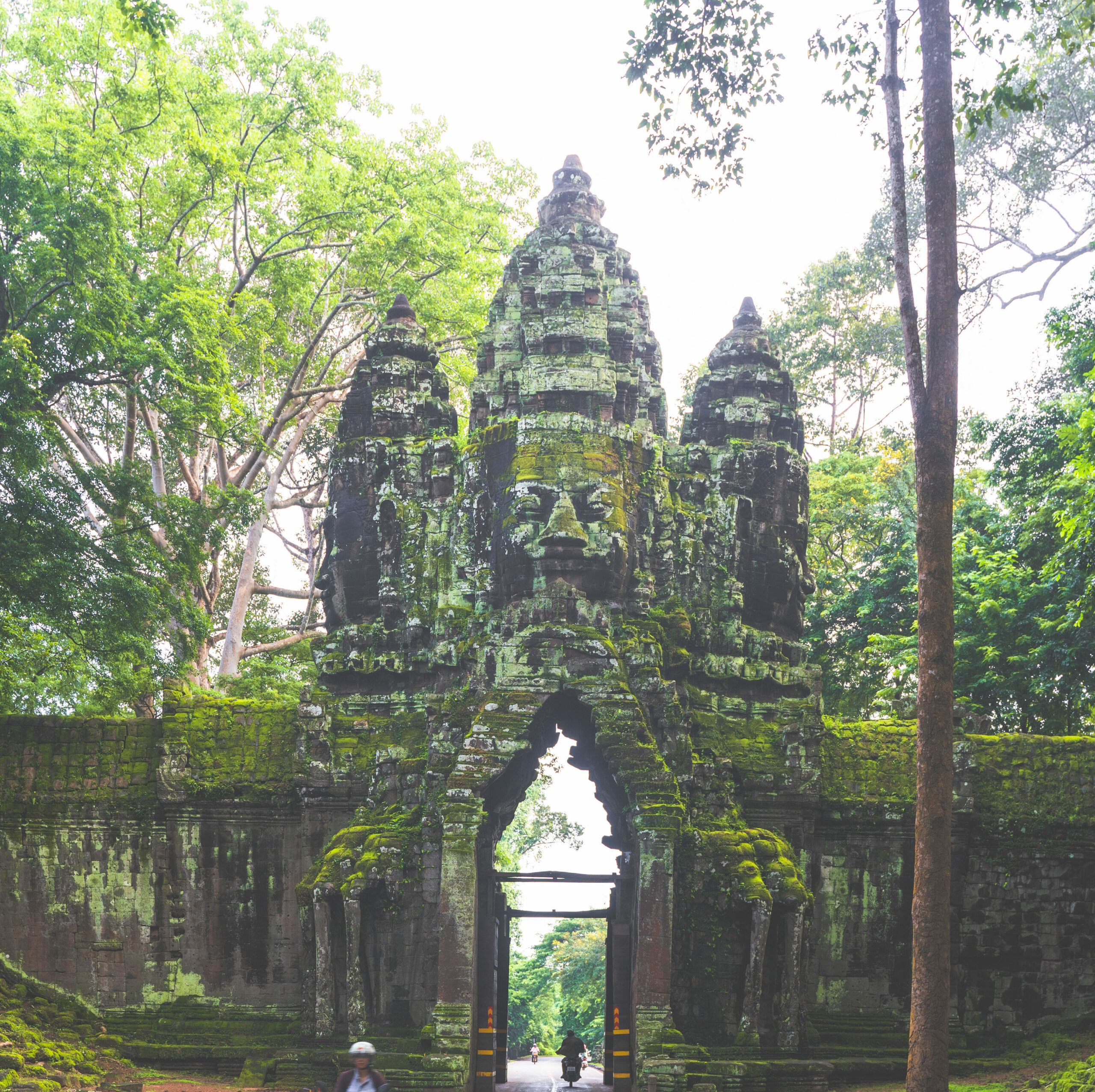
A MARVEL OF INGENUITY
The overall arrangement of the city is a marvelous piece of engineering and urban planning. There is no antique city that size, in the world that is so well designed. But the rational organization of Angkor, is a response to the harsh weather conditions and the wild Jungle scattered all over this part of Cambodia. It was rational out of necessity. For pragmatical uses, the whole city was designed on an orthogonal plan, organized with thousands of canals to drain rain water into huge rectangular basins in order to prevent an overflow on the rice fields, and stock it for the dry season. The largest of them is almost 8km long, and 2km wide. Making it the biggest humain construction of the ancient times.
But what’s even more amazing is the general layout of the city. The main square surrounding Angkor Thom, is 2km wide. Along its boundaries, a 20m wide canal was dug. And around the canal, a protective wall circling it was built. This is only a small part of the inner organization around the Angkor ensemble. Many temples are parts of smaller compounds. The population in Angkor was estimated at a million when the city reached its climax, almost half of Paris’ intramural population.
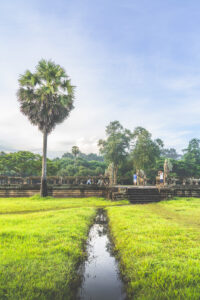
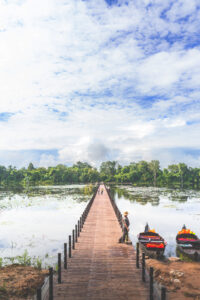
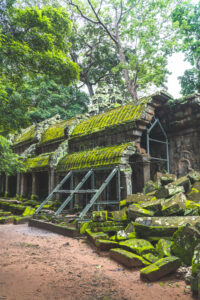
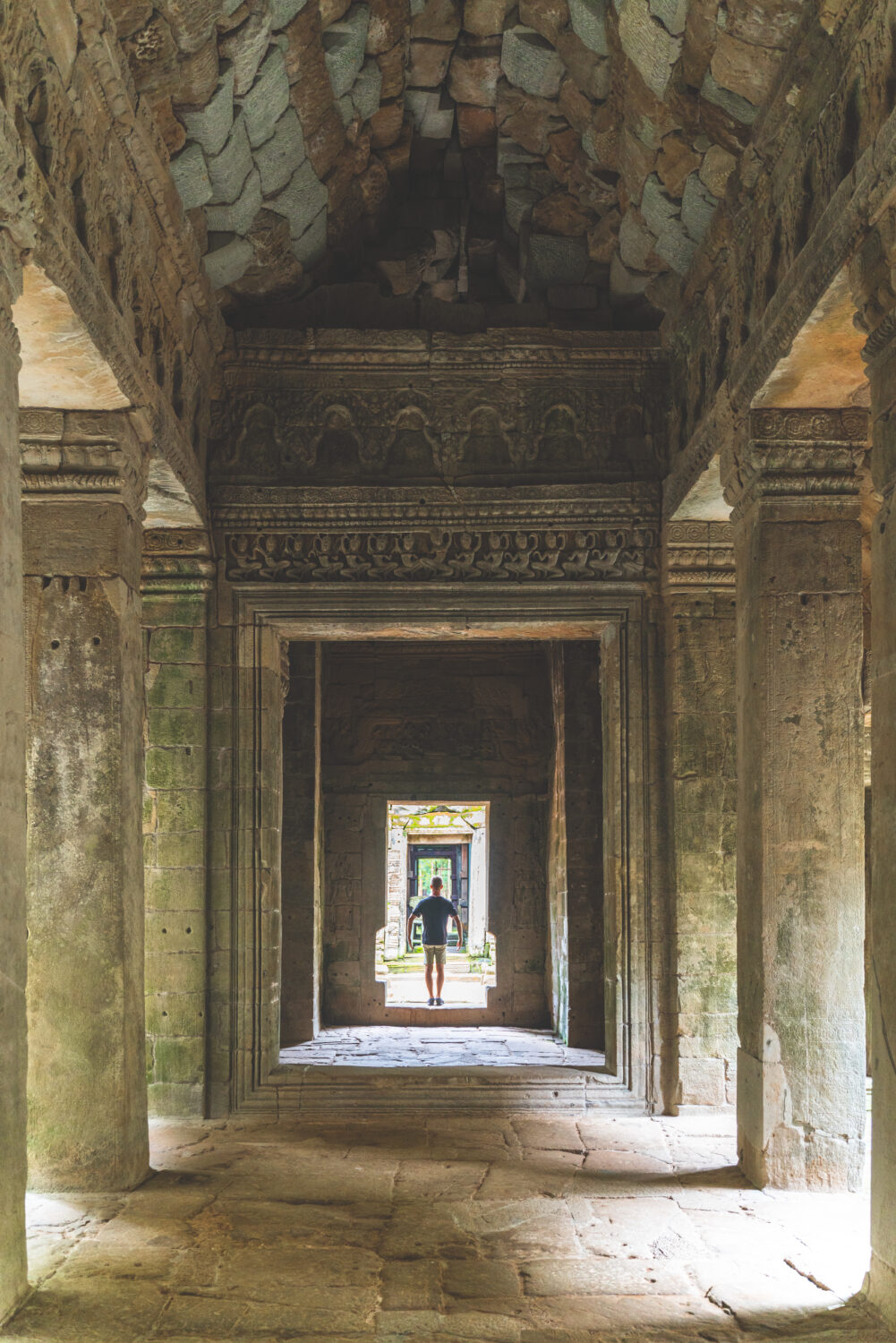
THE LOST CIVILIZATION
The history around the Khmer empire is fascinating. The Khmer ruled over south east Asia from the 9th to the 15th century. All began in the beginning of the 5th century, when self appointed king named Jayavarmans the second, started to expend its territory by conquering Khmer kingdoms all over South-East Asia. Many of the kings followed him and aggregated to his powerful ever-growing army. But Cambodia was constantly stained with civil wars. In 600 years of reign, 20 rulers lead the country but 16 only had a legitimate claim to power. Making the Khmer empire one of the most unstable kingdom of all times.
In the 12th century, after the death of Jayavarmans the 7th Angkor slowly became more and more vulnerable. For the two centuries to come, no written documents nor stone carvings were found. These were the dark ages of Cambodia. Leading the Khmer empire into battles against Ayutthaya (current Thailand) for decades. Although Ayutthaya finally captured the city of Angkor, putting a puppet king to rule the city, he was quickly overthrown by a Khmer prince, making Angkor the Khmer capital for one last time. It at this moment, that the Khmer decided to move their capital city to a less vulnerable place, near Phnom Penh, the current Capital of Cambodia.
Although it is still unclear how Angkor was completely abandoned, many theories converge to a drastic weather shift. Years of drought, followed by decades of flood made the wide city of Angkor too hard to manage. Mostly because during the draught, new canals were dug, to drain more water towards to rice fields. Although essential during the dry seasons, those same canal system would overflow the city during heavy rain pouring. Turning calm streets into torrential rivers.

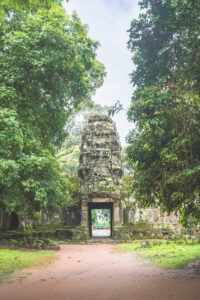
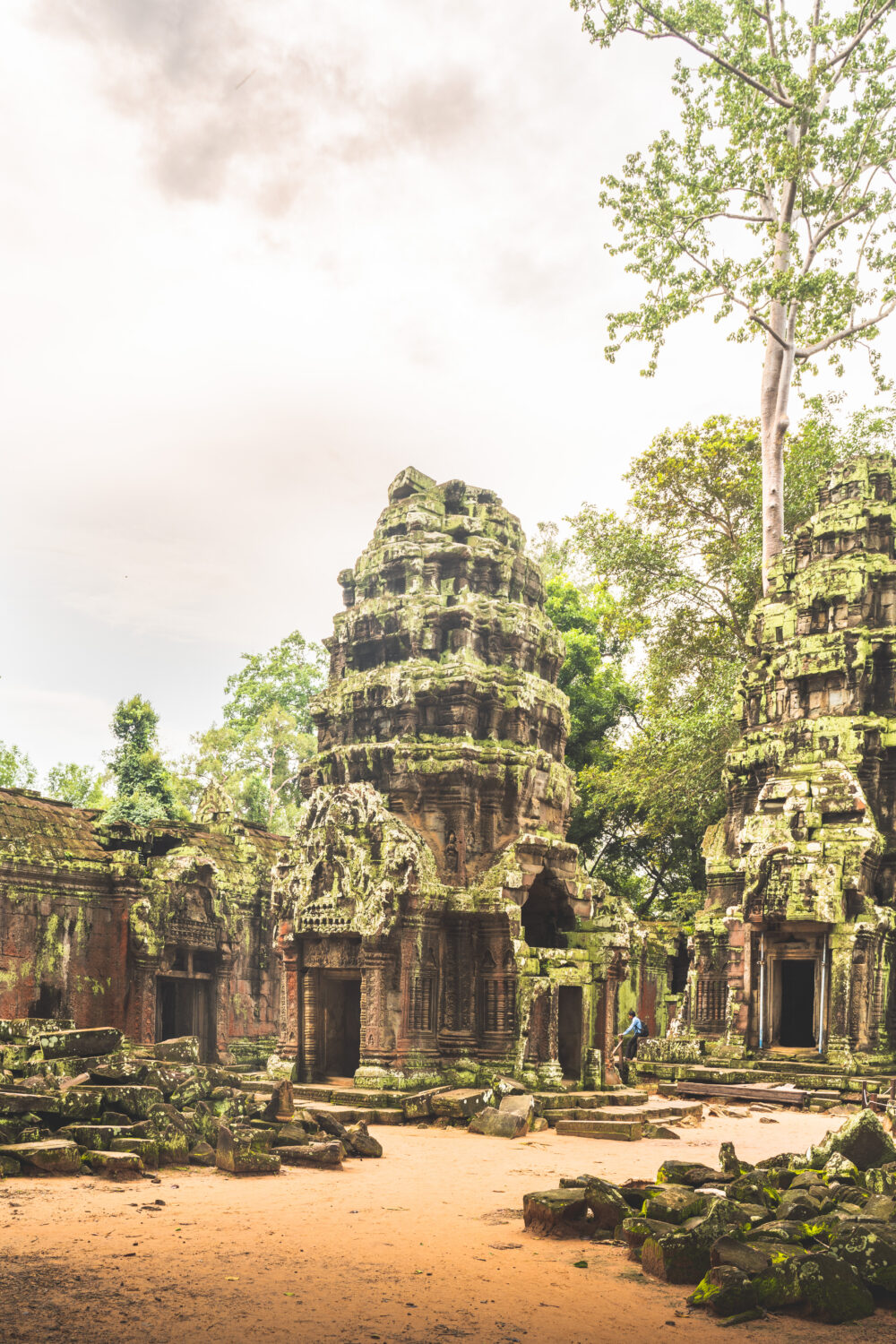
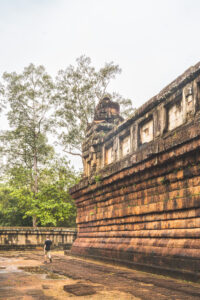
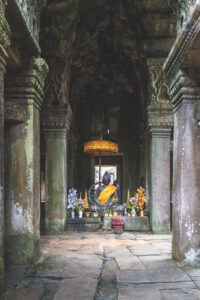
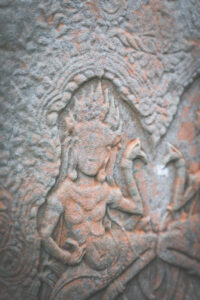
SHIFT IN BELIEFS
For many centuries, Angkor was a Hindu society. But but in the 12th century, when a new leader was appointed, chasing the Cham (Vietnamese tribe) from Cambodian lands, the people slowly switched into his region ; Buddhism. And so, Hindu temples were turned into Buddhist ones. New temples would be built more open, without surrounding walls, reflecting the Buddhist beliefs where everyone would be welcome in.
KAMPONG PHLUCK
FLOATING VILLAGE
It’s always a bit awkward for me to go in a poor village and take pictures of people’s houses. I am always a bit torn between the fact that those people need tourists to survive, and the fact that I am here, seeing their mystery and basically doing nothing.
However, the floating village of Kampong Phluck is a place to see once in your life. It is especially interesting during the Monsoon, when the water is at its higher peak. Only then you can see how the houses operate. Every one is moving by boat. Kids are going to school, Youngsters are racing on the river, fisherman working their nets, traders showing off their boats full of goods etc..
In most of those villages you’ll have to book a tour to go around though. They include many things you might want to know before engaging in one. Here is how it generally operate. Firstly, the bus driver will pick you up at your hostel. Secondly, you’ll hop on a boat with other persons and head to the village center. The guide will tell you about the customs and habits of the inhabitants. How they work, go to school, move around. All that during the monsoon and the dry season. When you anchor in the center, you’ll usually visit a school…
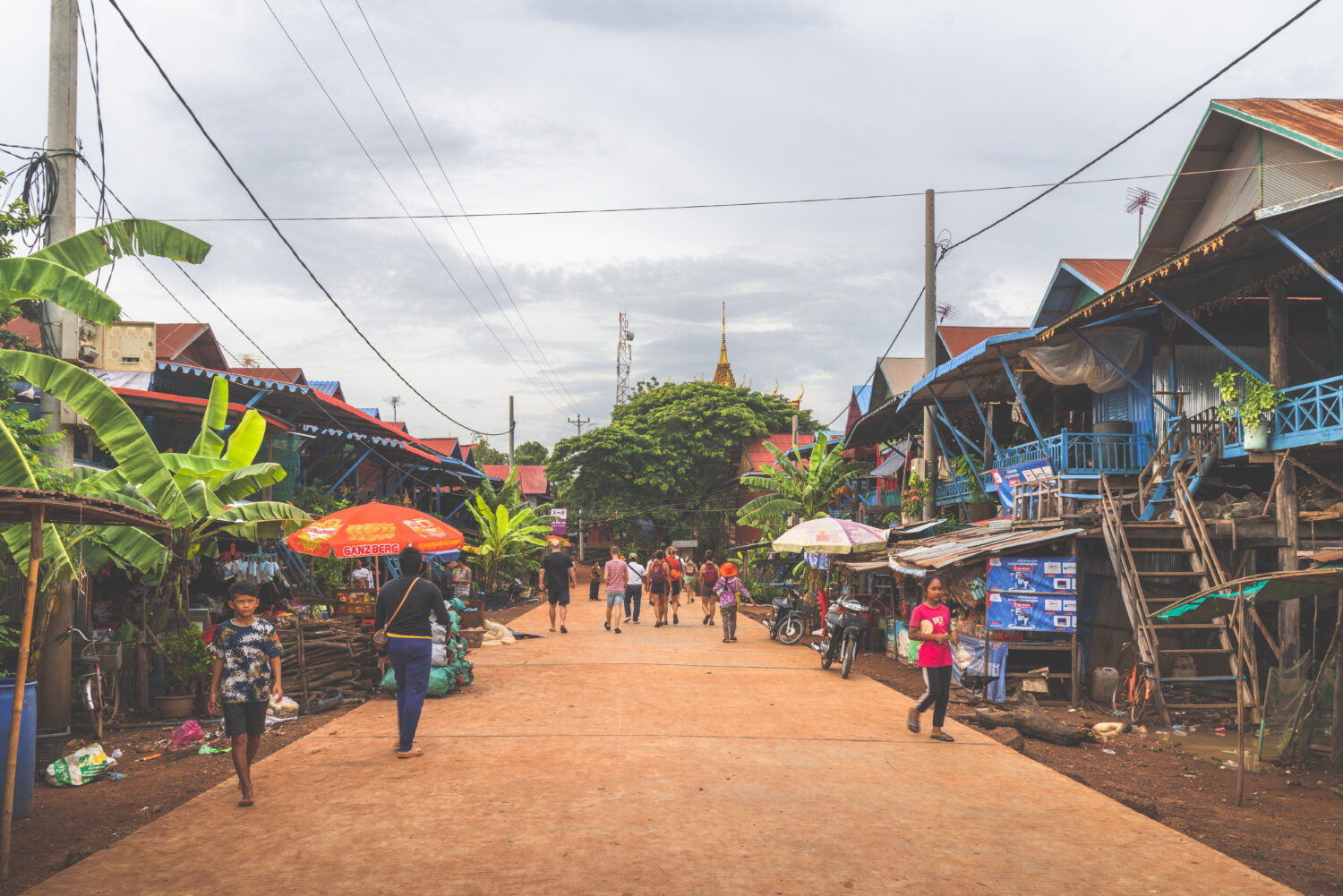
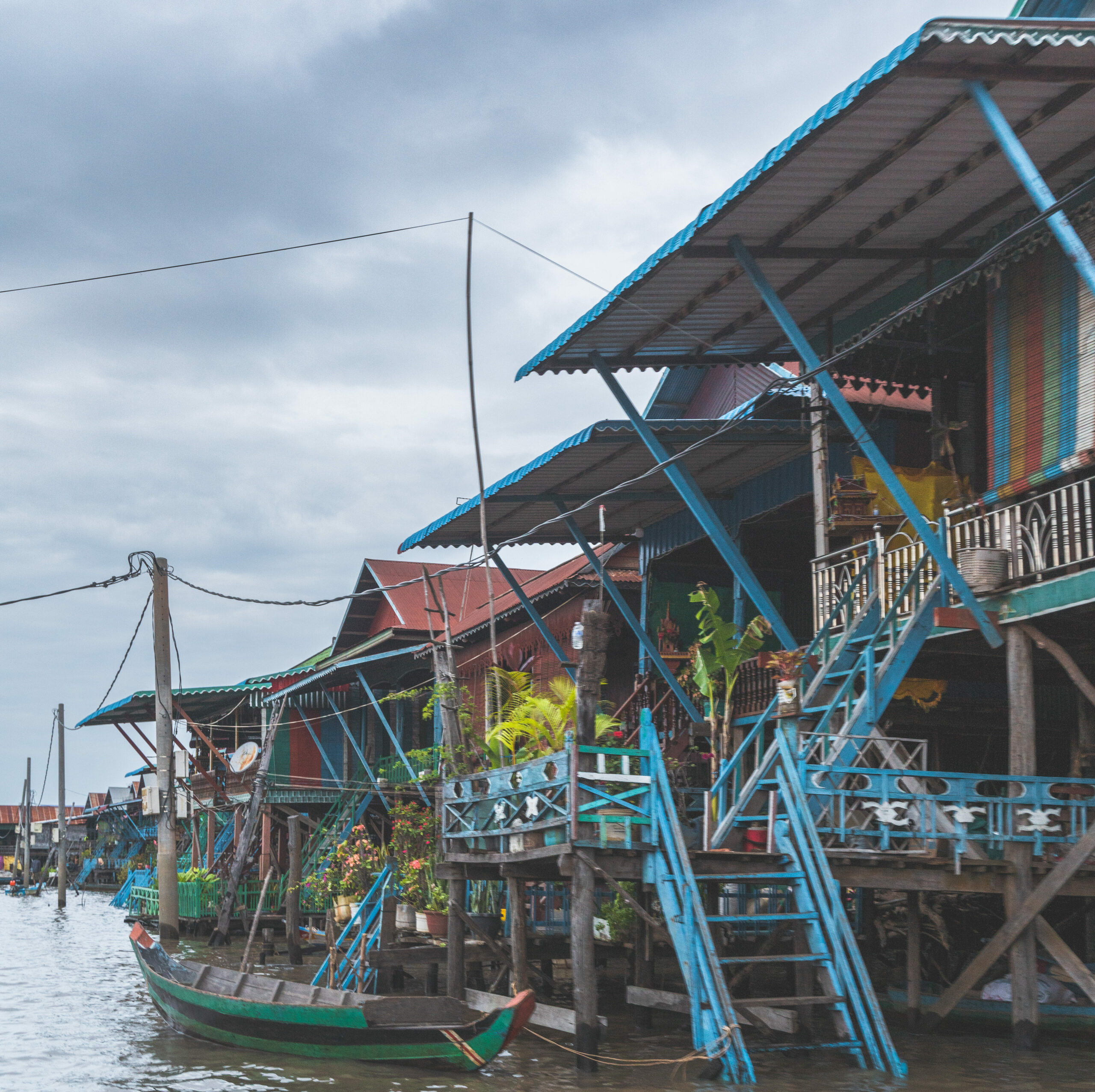
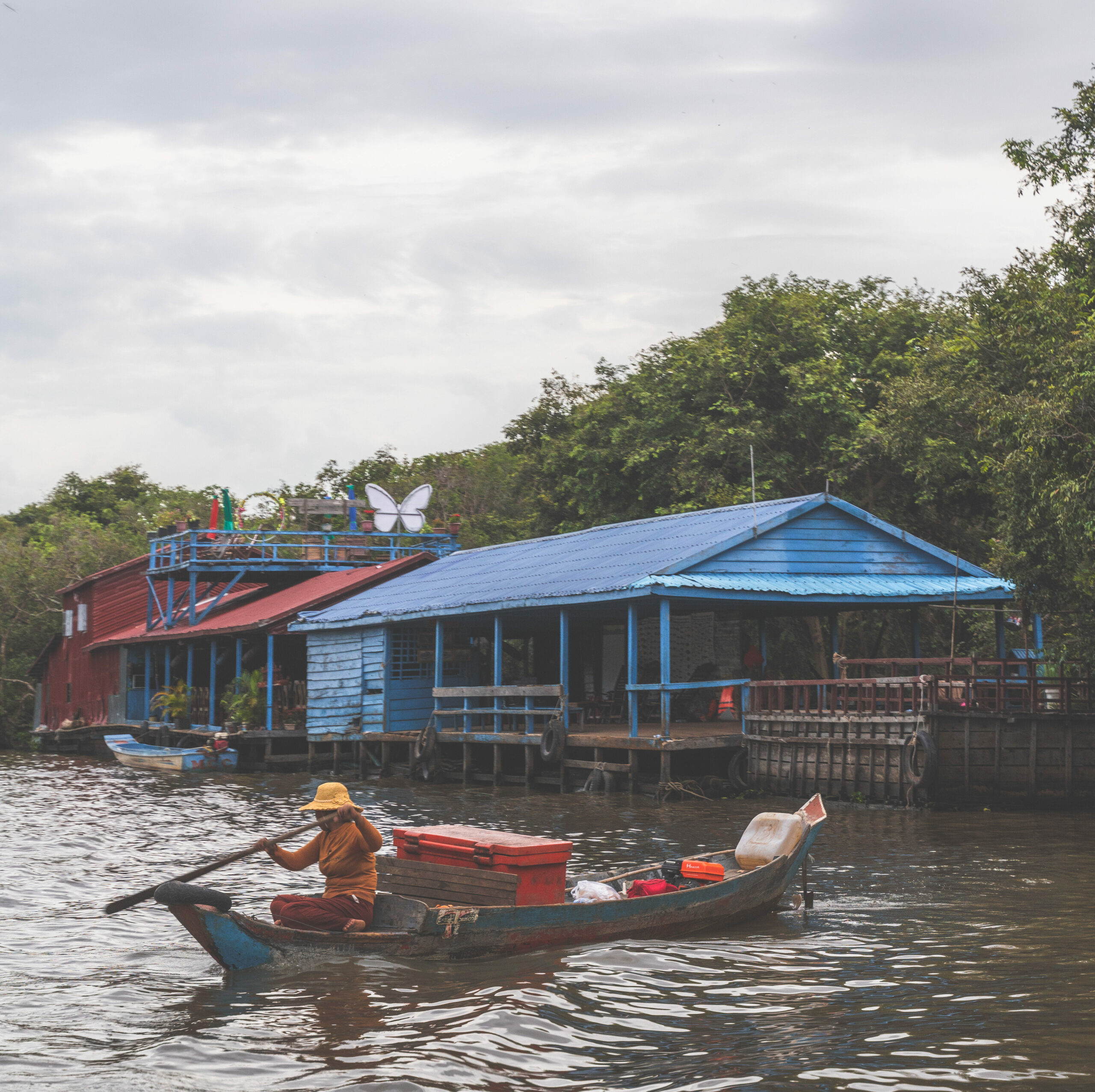
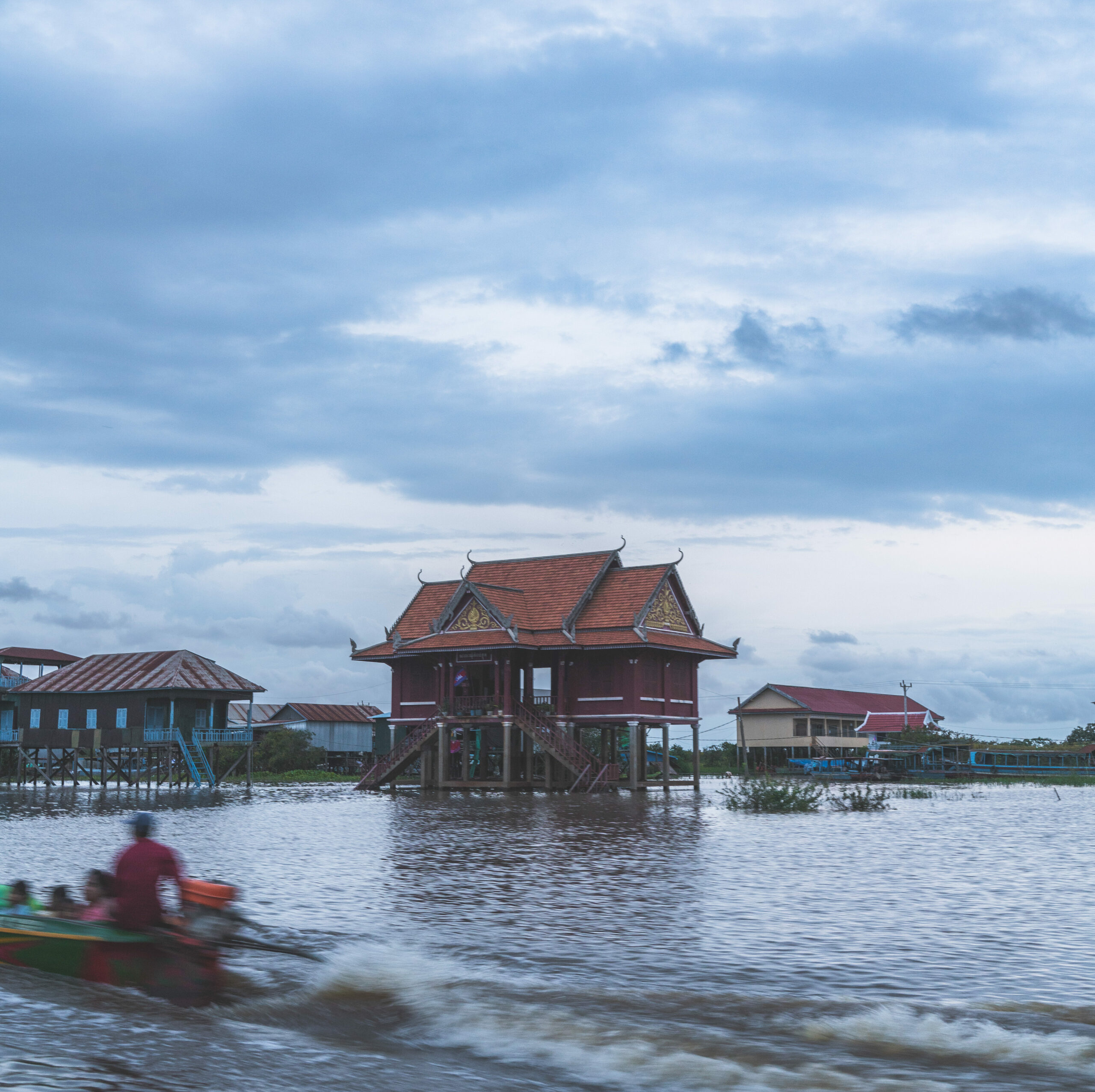
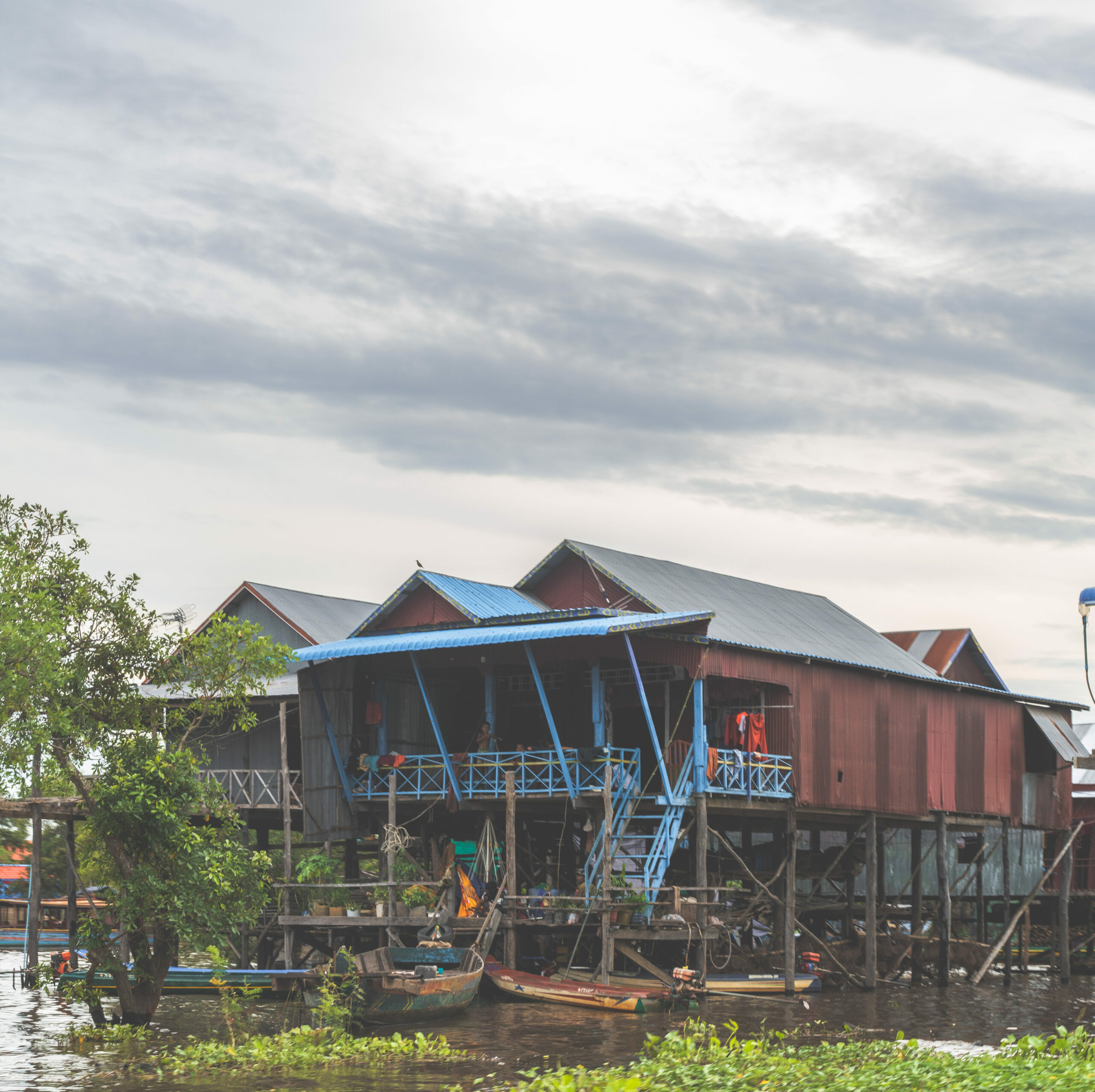
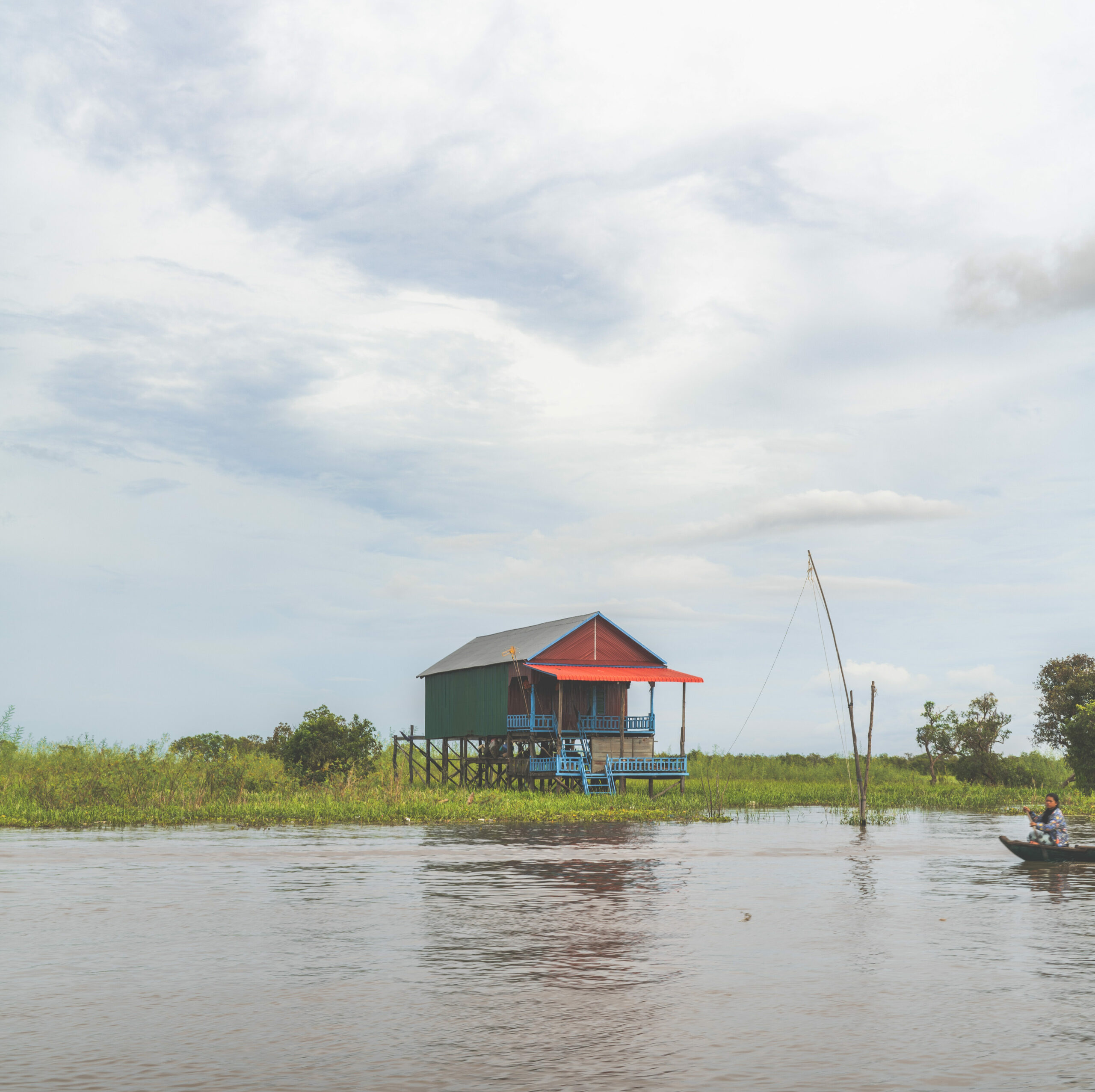
PHNOM PENH
“When all other senses sleep, the eye of hope is the first to awaken, last to slumber.”
—J.R.R TOLKIEN
HARSH HISTORY
Cambodian recent history is extremely violent and not really known to all. To sum it up, the Khmer Rouge : a fascist communist movement led by their leader Pol Pot, made a coup in 1975. When they took power, many students and expatriates came back to their country, with a great hope of change. Not having the slightest idea of the living hell awaiting for them back home.
With some distance, people might ask why the hell would they go back under a dictatorial communist regime. To fully understand why students and expatriated Cambodians came back to their country under Pol Pot regime, we have to go further back in history.
For those expatriate Cambodians, the change of political regime was mirroring great hope for a brand new future. With enough propaganda, the communists made people believe that they would all be treated equally. In a country where social inequities are at their paroxysm, those statements are butter bread for the people. And so, dreaming of a better future for everyone build on social equality, people developed a strong hope in the new regime. So powerful that it lead young expatriates to come back. It tells a great deal about human behavior : we are always full of hope, even, if not especially, in the most unrealistic situations.
In Phnon Penh there is a museum called S-21. It is located in an old school, turned into a prison first, and soon after, a torture and interrogation camp. The stories and the place are a memorial of the worst time in the contemporary history of Cambodia. But it is very important that no one ignore nor forget them. If you are interested in knowing more there is a film on Netflix called “First, they killed my father” directed by Angelina Jolie on the topic.
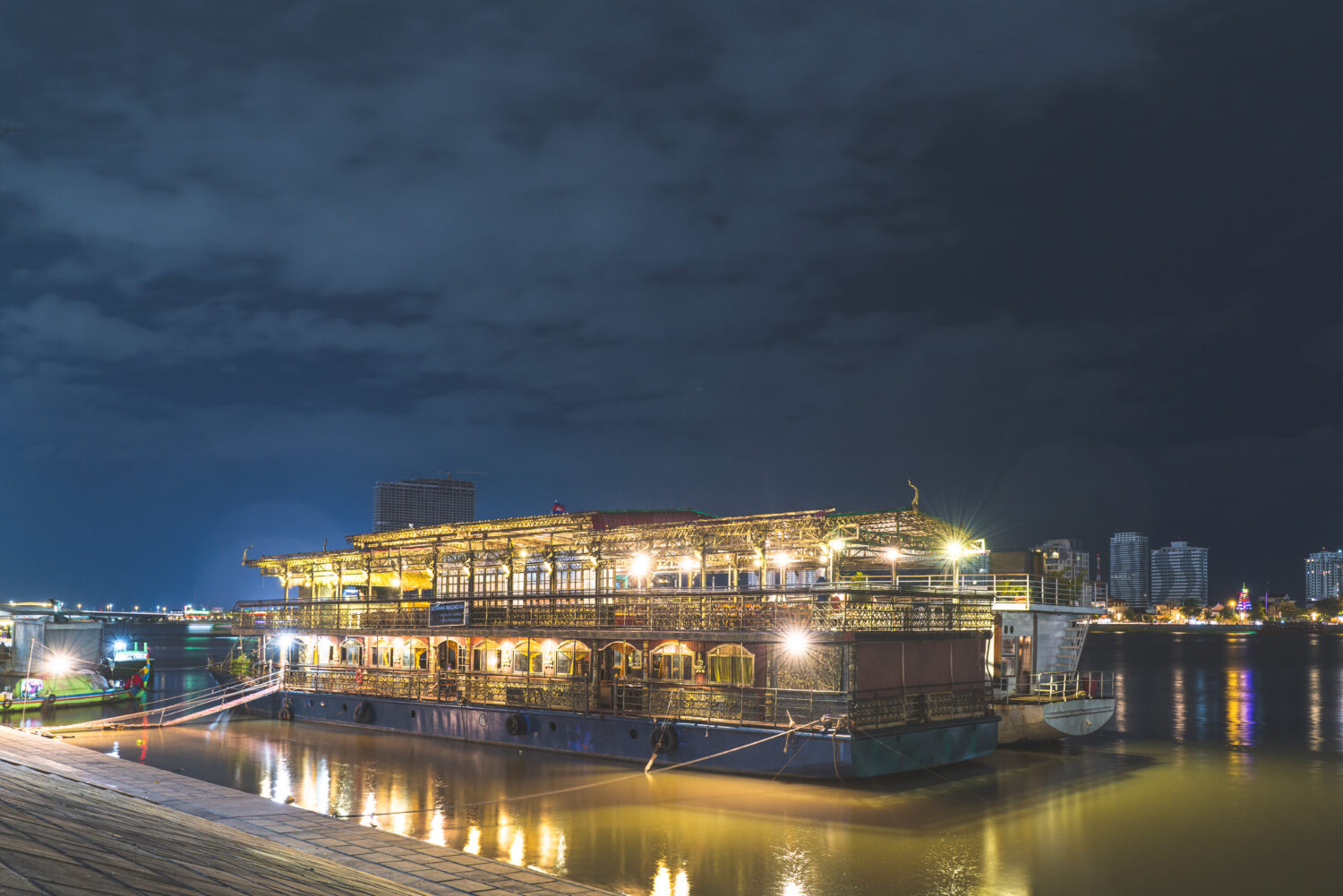
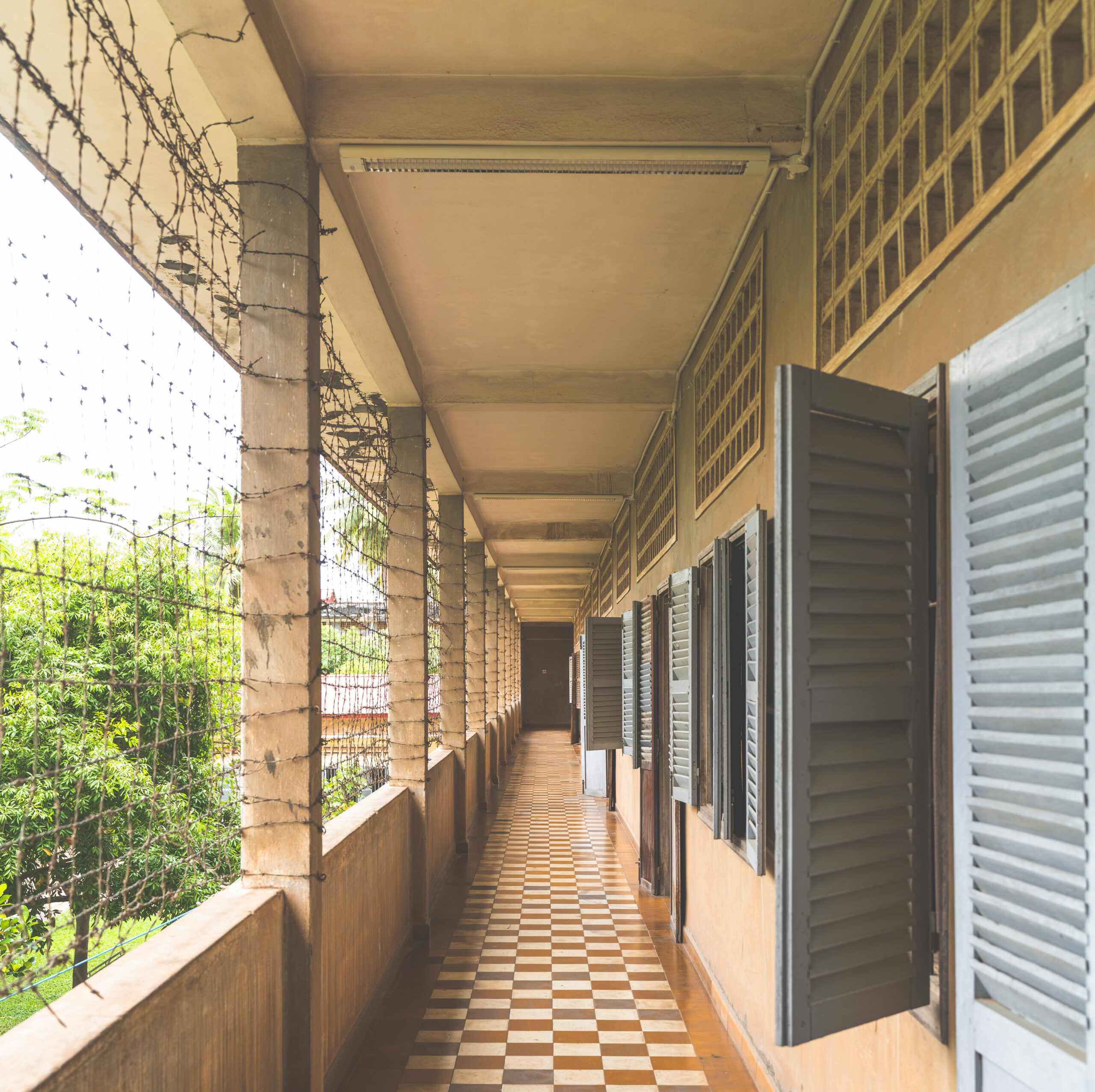
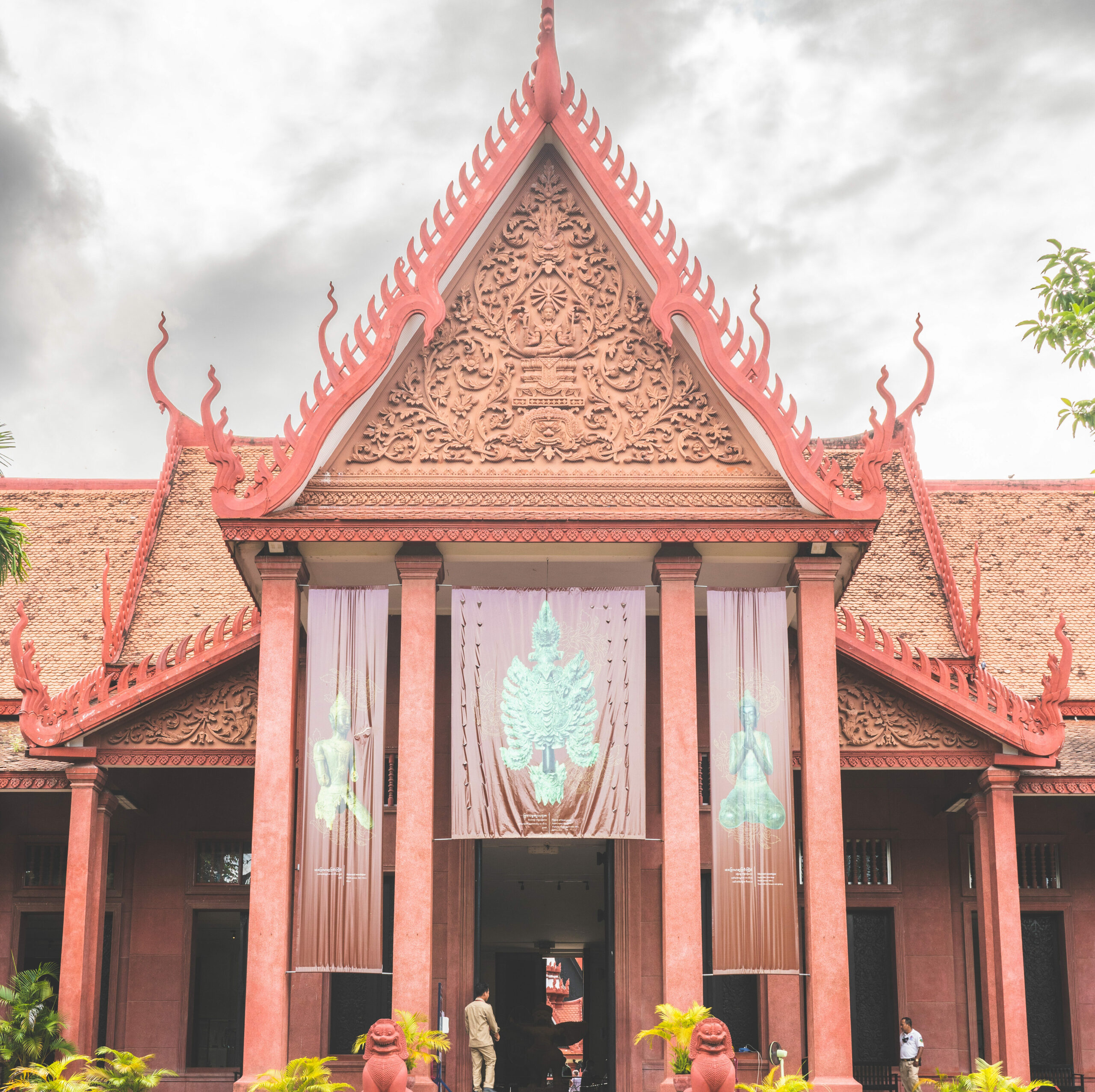
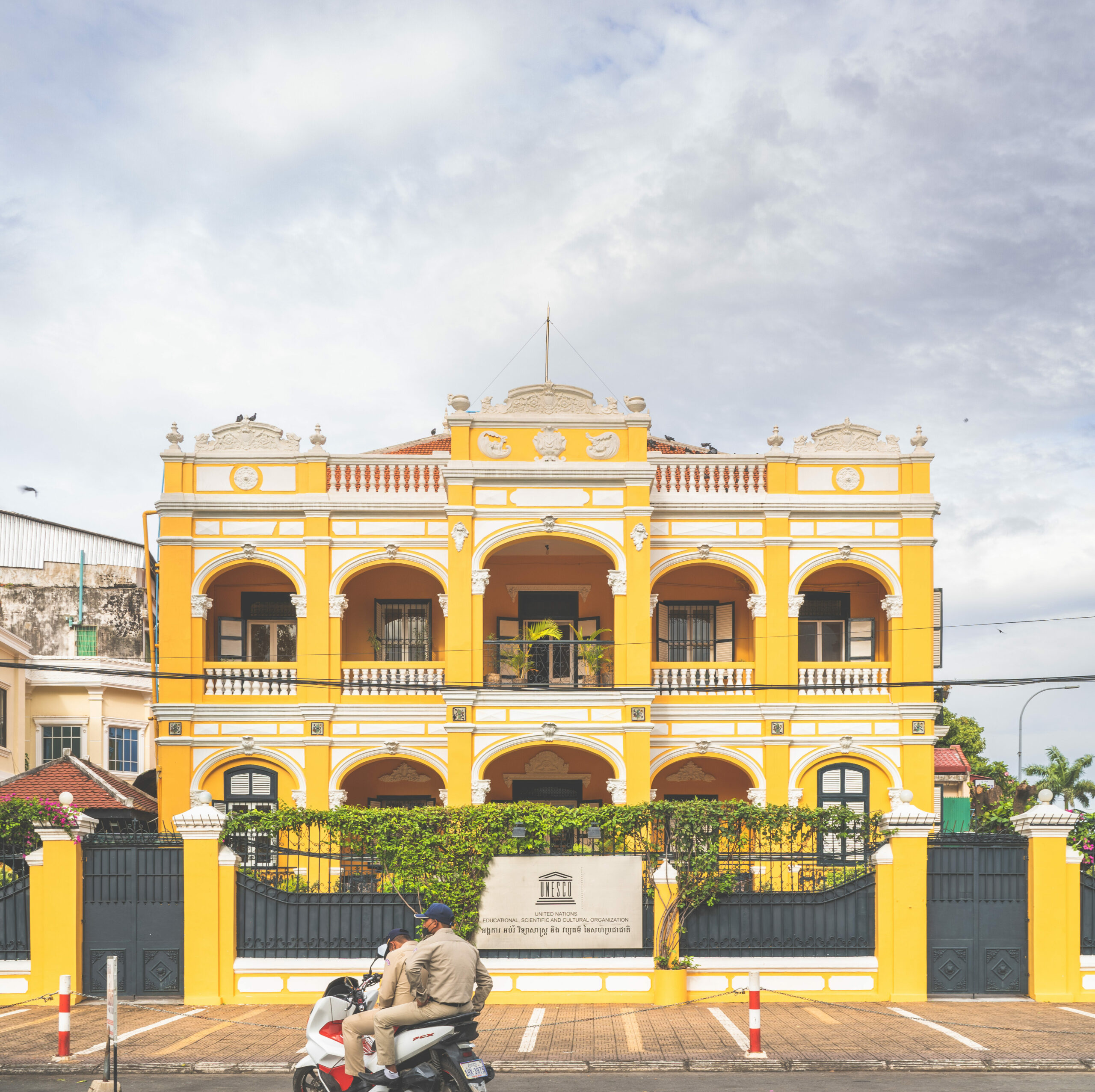
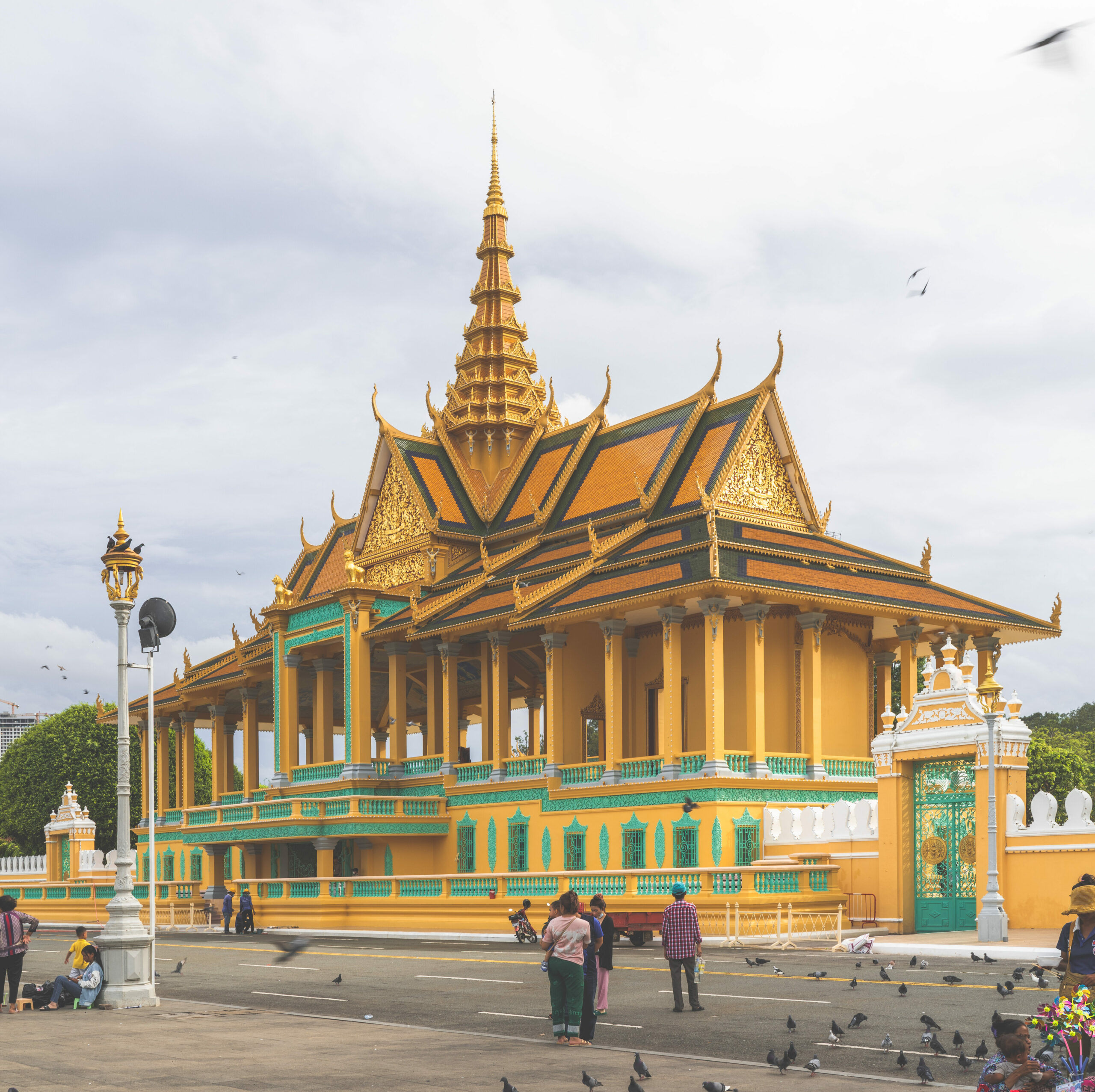
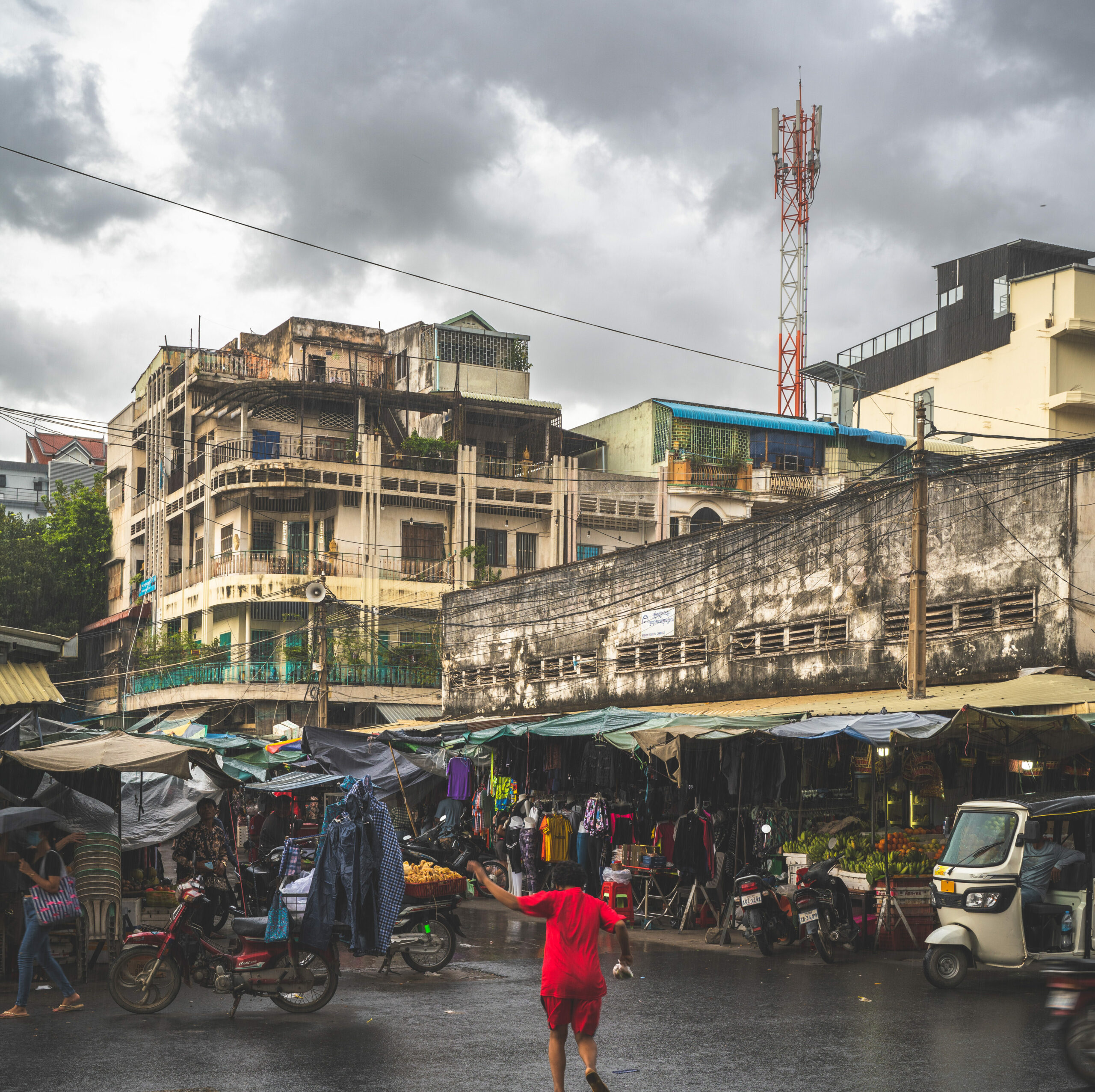
SILK ISLAND
On our last day in the capital, we decided to rent bikes to go around silk island. In Cambodia you don’t really have to plan things too much. This time, when we took the ferry to cross the Mekong, a lady already was asking us if we wanted to rent bikes. So she led us to her sister who was renting bikes and also had a family business in the silk. A purely coincidental event I suppose.
We went all around the island with our city bikes, making our organic engin roar, sweating our asses off, hairs in the wind. A good old time on those bumpy, muddy roads. It’s really interesting to see this side of the town, as people are living more modestly. All along the main road, traditional Cambodian houses are cohabitating with local stores and silk crafters. You can ear their machine working from afar. One advice if you decide to go there though, do not head for the resort at the tip top of the island. The place is filled with wastes and not interesting at all.
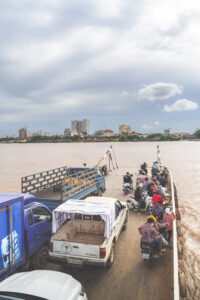
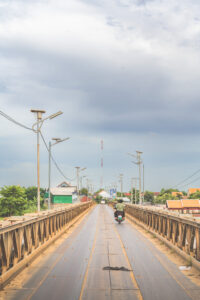
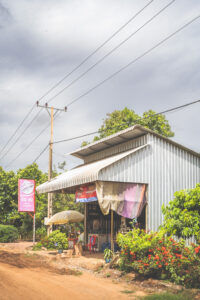
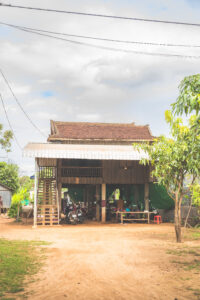
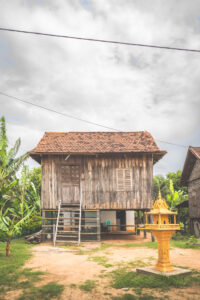
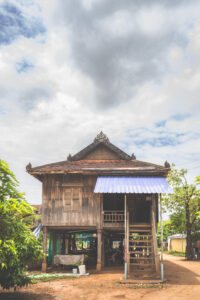
TO CONCLUDE
In Cambodia, people will always be smily and nice to you. Whether they want to sell you something or not, Cambodians are very lovely and warm hearted people. Try not to grow impatient at their relentless requests for a drive or a sell, as many of them make their living out of it.
In Cambodia you can :
- Pay with dollars or the local currency. Be careful when you cash in dollars though, they have to be in pristine condition or they’ll be devaluated or even not accepted in certain stores
- Use Grab, the easiest way to take tuktuks and have a fair price
- Use local buses to move from one city to another. Know that they are very slow and carry all kinds of goods in the central alley. From soil nutriments to clothes. It’s also a good experience to see how nothing is wasted, not even transportation.


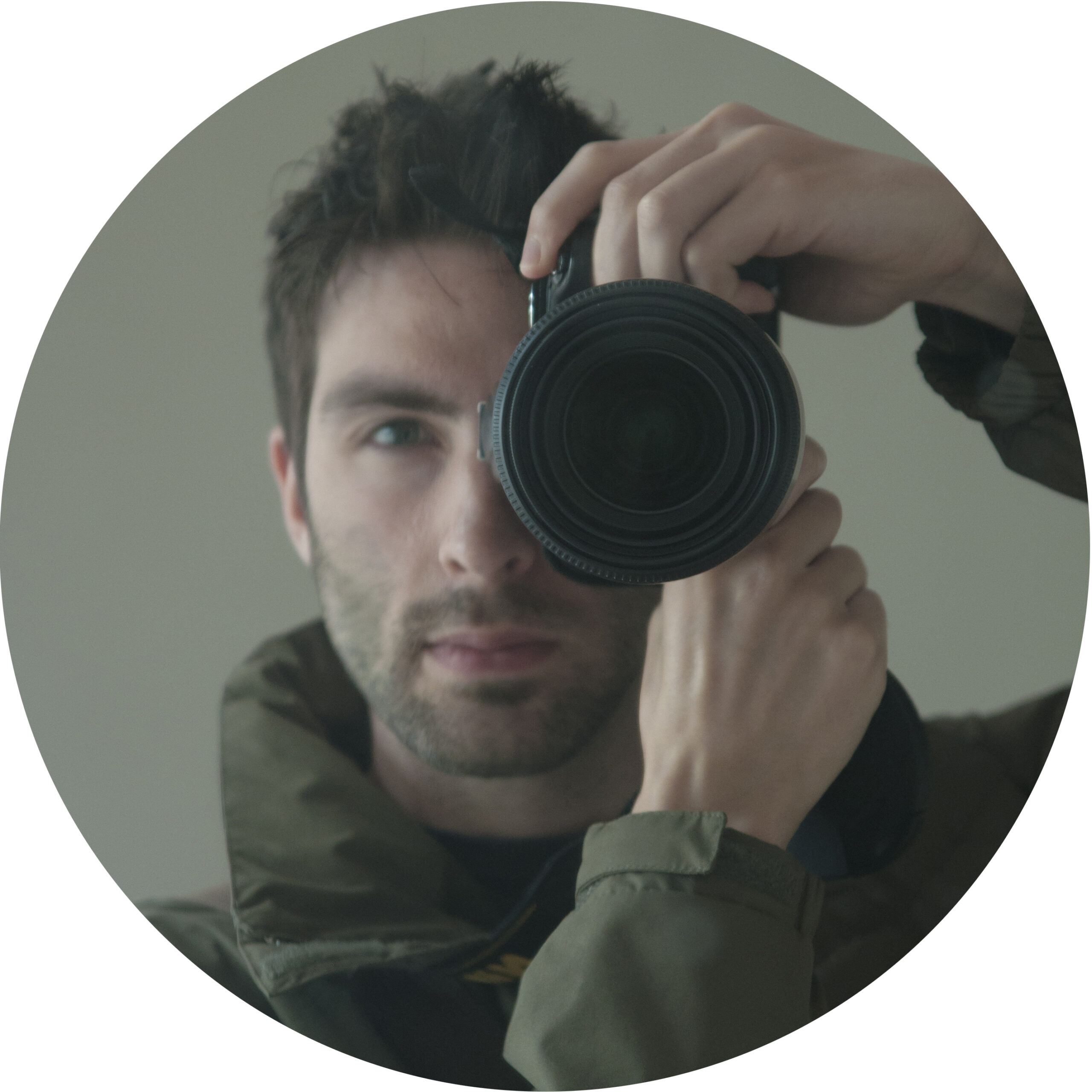
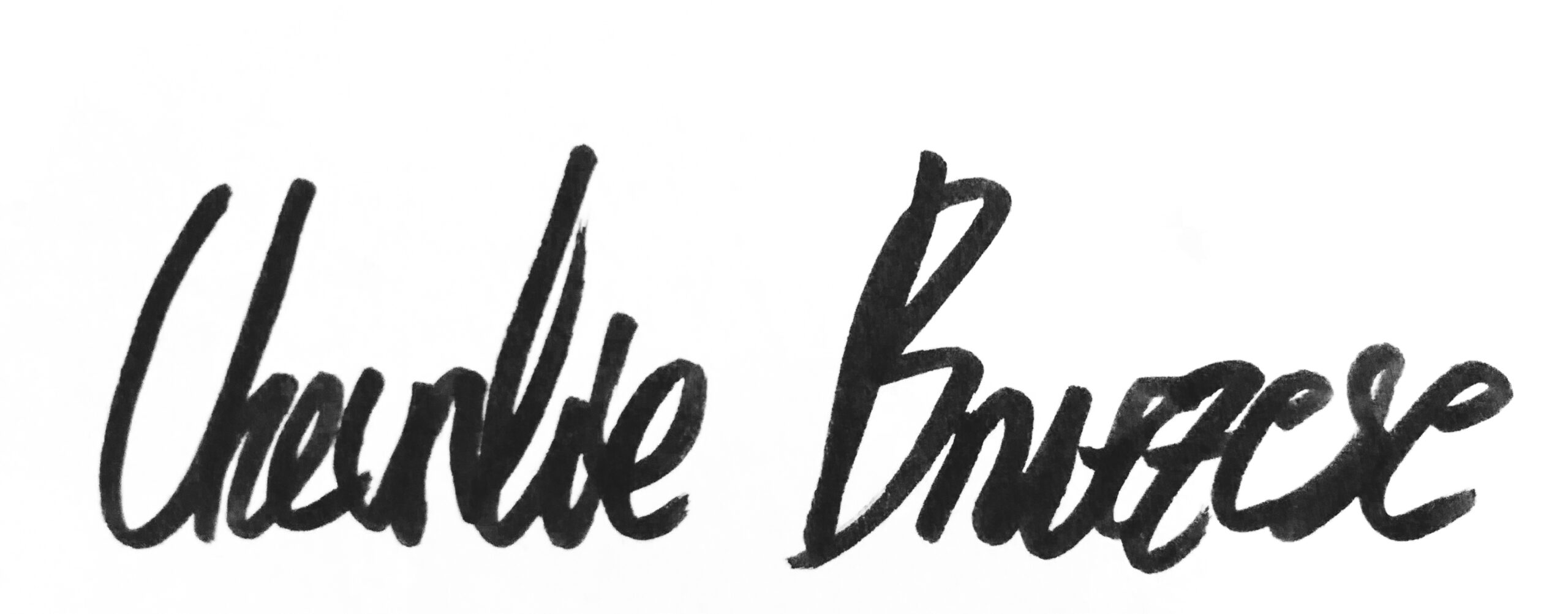
Leave a reply